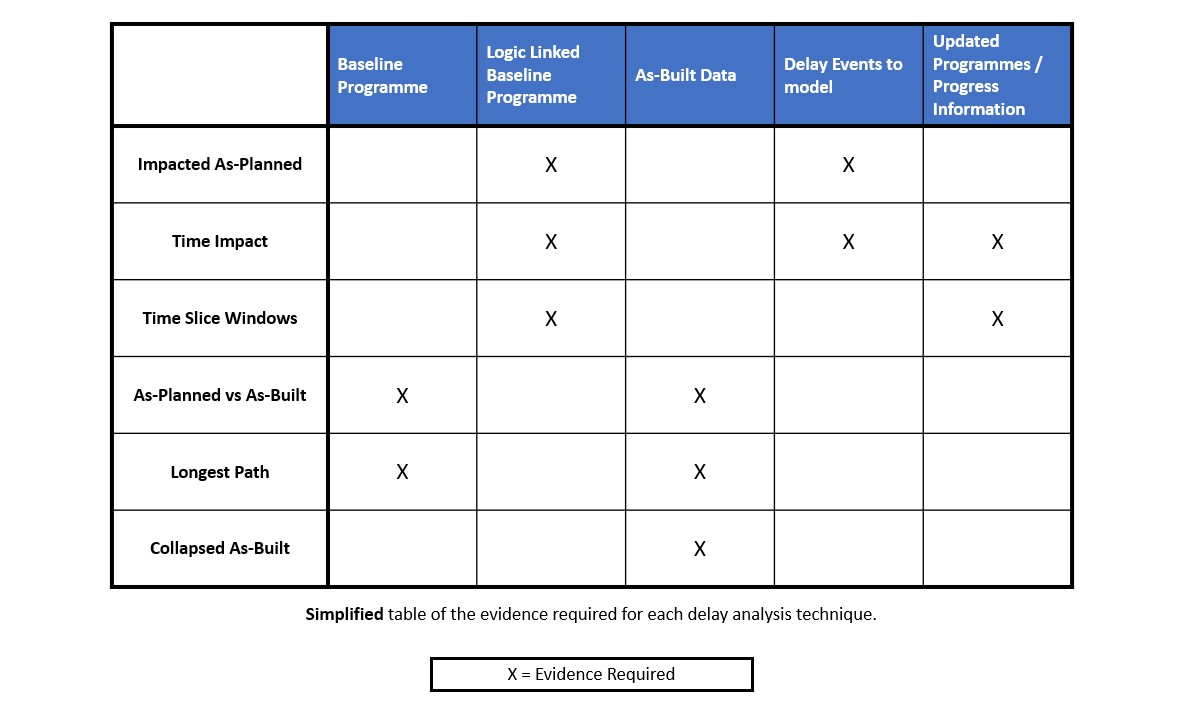Evidence Required for Various Delay Analysis Techniques – Back to Basics #43
Following some recent queries from our clients, we thought it would be helpful to provide a diagram highlighting the information (evidence) required to prepare a delay analysis utilising one of the main (6) techniques detailed in the Society for Construction Law Delay and Dispute Protocol.
The protocol details six different methods of delay analysis. These are Impacted As-Planned, Time Impact, Time Slice Windows, As-Planned vs As-Built, Longest Path and Collapsed As-Built.
Each of these techniques have Strengths and Weaknesses (which we will detail in our next Back to Basics document on Saturday).
The decision on which analysis technique is to be adopted is often dictated by the information available. The sample table below identifies which information is required and will help you understand which technique you could utilise based on information available.

Our Team of Specialists can help you identify what evidence is required for each delay analysis technique.
-
Sheffield
The Annexe,
260 Ecclesall Road South,
Ecclesall,
Sheffield,
S11 9PSTel - 0114 230 1329
-
London
Adam House,
7-10 Adam Street,
London,
WC2N 6AATel – 020 7520 9295
-
Leeds
Suite 69,
4100 Park Approach,
Thorpe Park,
Leeds,
LS15 8GBTel - 0113 397 0358
-
Warrington
Suite 41,
Lakeview 600,
Lakeside Drive,
Centre Park Square,
Warrington,
WA1 1RWTel - 01925 984705
-
Manchester
3 Hardman Street,
Manchester,
M3 3HFTel - 0114 230 1329
-
Birmingham
Birmingham Business Park,
4200 Waterside Centre,
Solihull Parkway,
Birmingham,
B37 7YNTel - 0121 481 2381
-
Liverpool
Horton House,
Exchange Flags,
Liverpool,
L2 3PFTel - 07753 837149
